Xeriscape Landscaping Plants For The Arizona Desert Environment.
Pictures, Photos, Information, Descriptions,
Images, & Reviews.
Trees.
Chinese Pistache Trees, Pistacia chinensis.
We Are Proud Of Our SafeSurf Rating!
Click On Any Of The Following Links By Amazon.Com
For Books, & Videos About Wildflowers Of Arizona & The Southwest USA. No Obligation!
 |
| Chinese Pistache, Pistacia chinensis. Photo Taken June 06, 2006. Glendale, Arizona Xeriscape Demonstration Garden, |
|---|
 |
| Chinese Pistache, Pistacia chinensis. Fall Color. Photo Taken December 06, 2006. Arrowhead Ranch, Glendale, Arizona. |
|---|
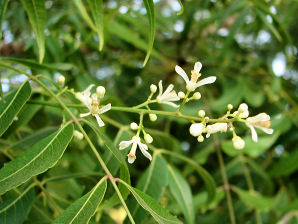 | 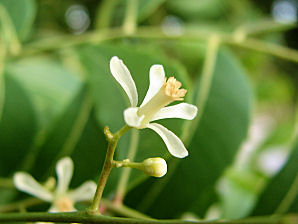 |
| Flowers. Chinese Pistache. Pistacia chinensis. | Flower. Chinese Pistache. Pistacia chinensis. |
|---|---|
 | 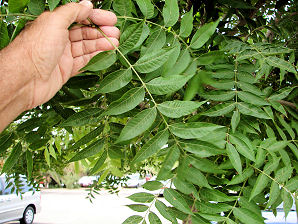 |
| Leaves. Chinese Pistache. Pistacia chinensis. | Leaf. Chinese Pistache. Pistacia chinensis. |
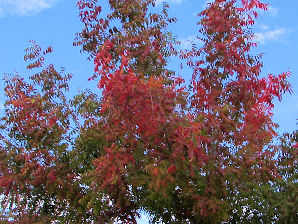 | 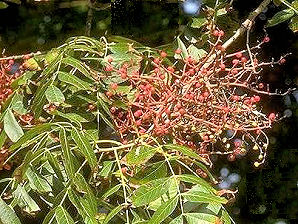 |
| Fall Color. Chinese Pistache. Pistacia chinensis. | Seed. Chinese Pistache. Pistacia chinensis. |
 /
/

Chinese Pistache Trees.
We wish to thank Wikipedia, the free encyclopedia for some of the information on this page. We share images and information with Wikipedia. A deciduous tree, growing moderately fast to slow, up to 40 to 60 feet tall, which can also have a 40 to 60 feet spread. It has a spectacular red, red-orange fall color. It has outstanding heat, drought and soil tolerance. it is extremely pest resistant. The Chinese Pistache is dioecious, meaning that there are female trees and male trees. The fruits appear on the female trees only if there are male trees in the vicinity. The fruits are bright red at first, turning dark blue as they ripen.
SPECIAL WARNING!
The female tree becomes invasive. While this is on several of the Xeriscape Landscaping recommended lists. We do not recommend it.
Quick Notes:
Height: Up to about 50 feet tall, equal spread.
Trunk: 3 to 8 inches in diameter. An attractive rough trunk; multi stemmed deciduous tree, sometimes single stemmed.
Bark:
Flowers: Dioecious; red to green in color, the males are in tight 2 to 3 inch long clusters along last years stem, the females in lose, longer groups of flowers.
Blooming Time: April to May.
Seeds: Bright red later on turning dark blue, they are round drupes, 1/4 to 1/2 inch in diameter, in a long grape like cluster that ripens in the early fall.
Leaves: Pinnately-compound, 10 to 12 inches long, 10 to 12 lanceolate to narrow ovate leaflets, with entire margins, tapering pointed tips, shiny green.
Found: Native to central and western China. Also native to native to Taiwan, and the Philippines. The USDA claims it is native of the USA (AL, CA, GA, TX).
Elevation: Native from 0 - 2,400 feet.
Hardiness: Said to survive into Zone 6b.
Soil pH requirements:
Sun Exposure:
Habitat: Moist, well-drained soils; however, tolerates wide range of soil conditions. Drought tolerant.
Miscellaneous: Photos Taken September 6, 2006. December 06, 2006. Glendale, Arizona. A low water use landscaping plant in the Phoenix and Tucson areas. Even though it is recommended, we do not recommend the female trees, since this plant has become very invasive. We think some day it will be on the invasive species list. It is considered invasive in Texas.
|



We Are Proud Of Our SafeSurf Rating!
Click On Any Of The Following Links By Amazon.Com
For Books, & Videos About Xerioscape Plants Of Arizona & The Southwest USA. No Obligation!
Back To Arizona Xeriscape Landscaping Main Page.
Back To Xeriscape Trees Page Three.
Back To Arizona Wild Flowers Home Page
Back To DeLange Home Page
© 1966 - Present, Audrey, Eve, & George DeLange
| © 1966 - Present, Audrey, Eve, & George DeLange |


